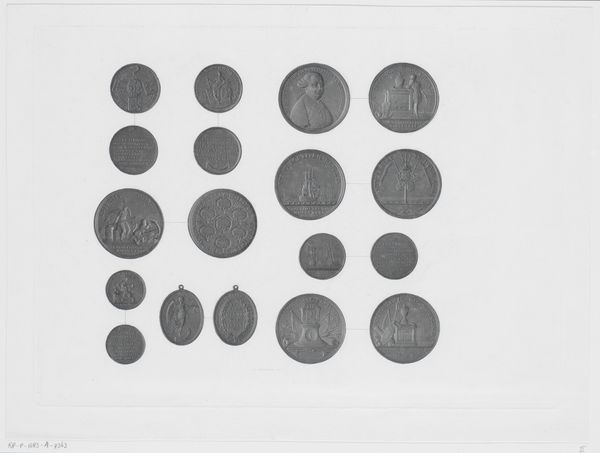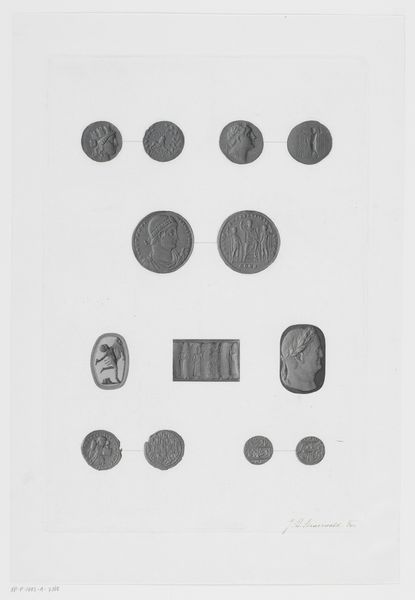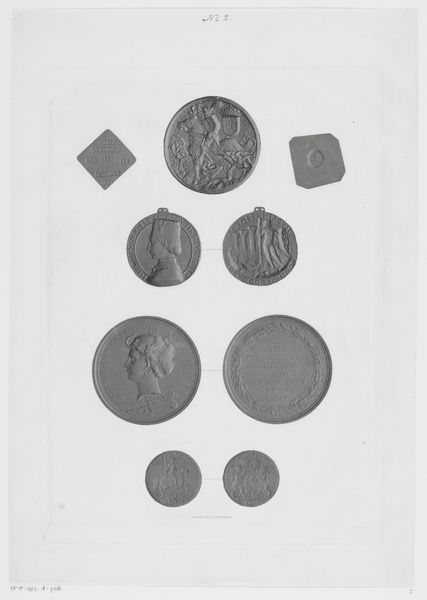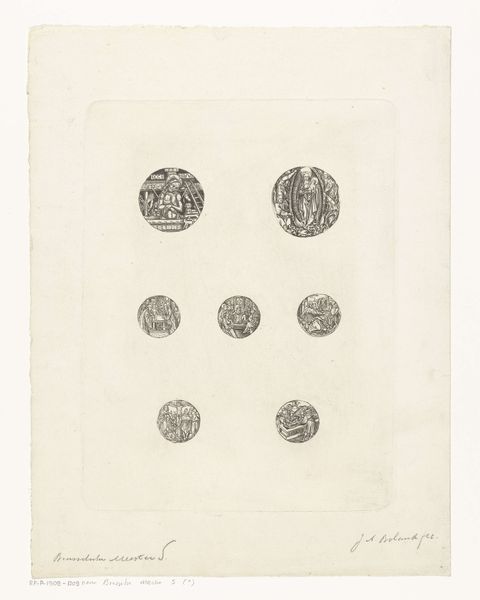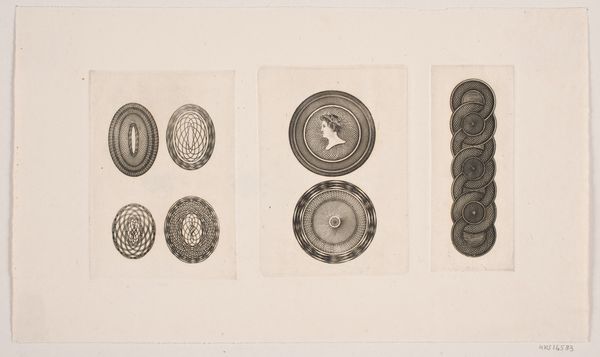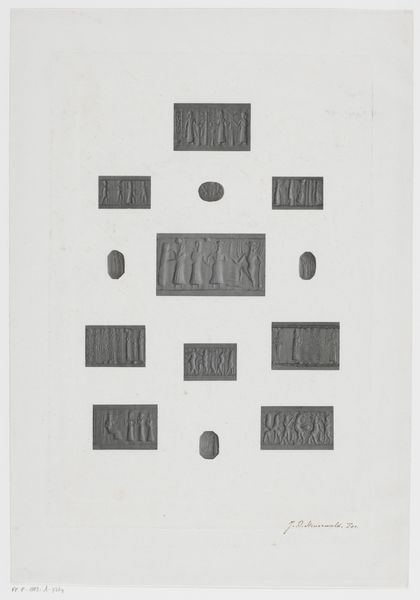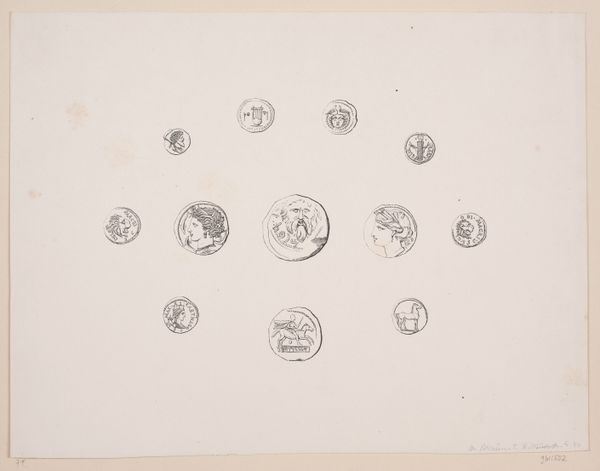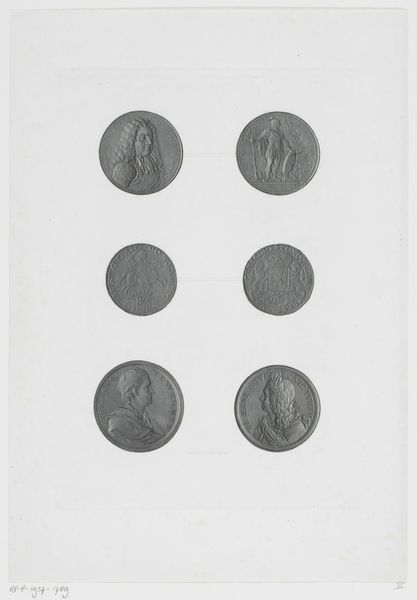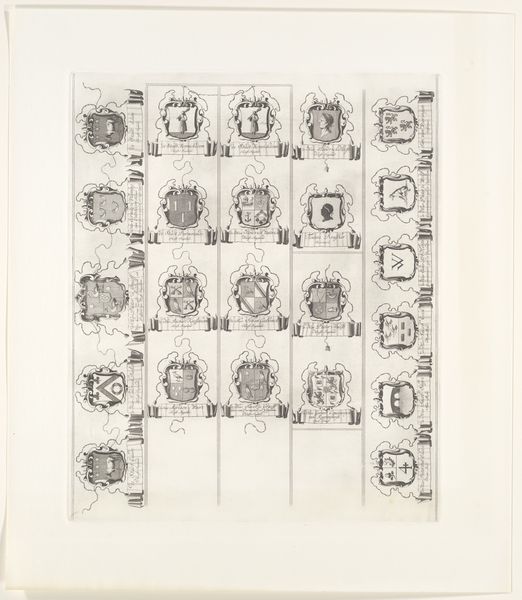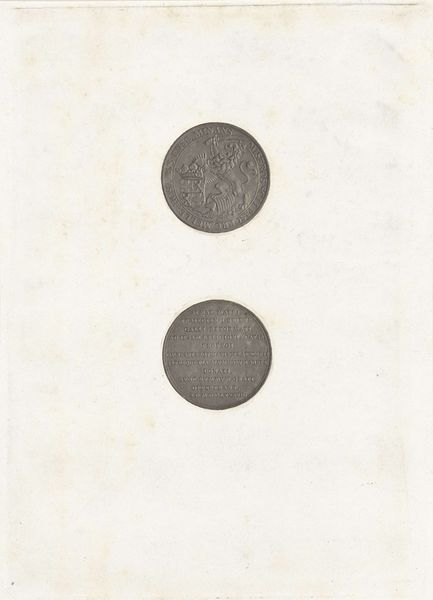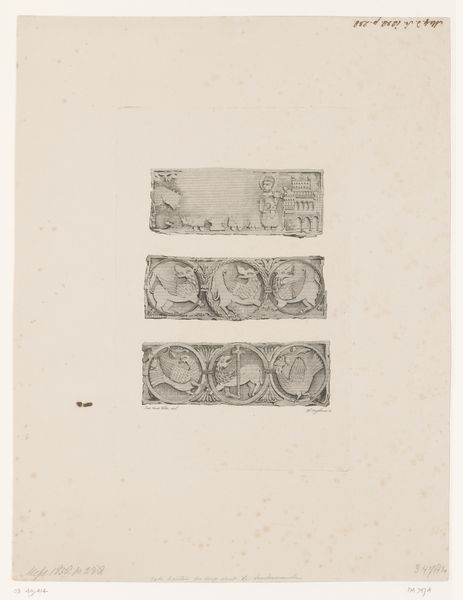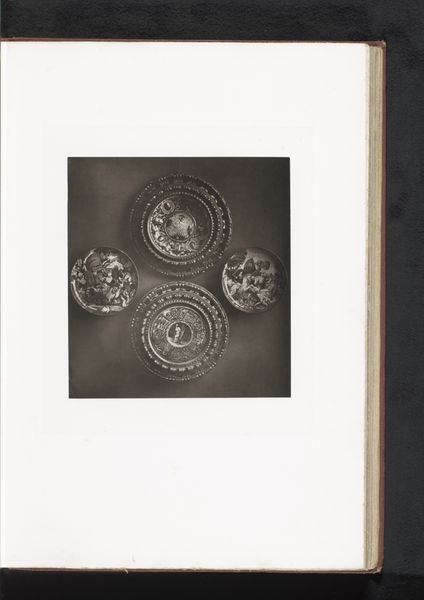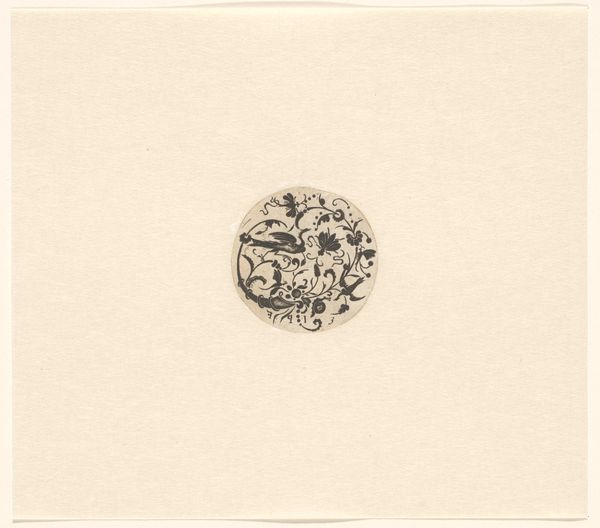
print, photography
# print
#
photography
#
ancient-mediterranean
#
coin
Dimensions: height 200 mm, width 165 mm
Copyright: Rijks Museum: Open Domain
Curator: What a fascinating and austere image! A gridded collection of ancient coins... it gives me a strange sense of order and value, even if I don't know their precise worth. Editor: This albumen print, titled "Muntverzameling," or Coin Collection, was produced in 1861 by Bisson Frères, a French photographic firm. It captures a series of meticulously arranged coins against a muted backdrop. Seeing this photograph through the lens of its creation, I'm intrigued by the labor and materiality involved in such a detailed reproduction. Curator: Absolutely, there's a tension here, isn't there? On the one hand, we're presented with precious artifacts – the coins themselves, remnants of long-lost societies. But then, there’s the mechanical reproducibility of the image itself, pushing against that traditional notion of unique, handcrafted value. It challenges what "art" really is. Editor: Precisely. Think about the choices they made. Albumen printing was incredibly detailed, requiring skilled processing techniques with egg whites and silver nitrate. Each step influenced the final tone and texture. This print shows incredible tonal control, making something as commonplace as money worthy of art gallery attention. It begs the question, what drove the decision to produce such a high-quality reproduction? Was it an attempt to democratize access to antiquities, or something else? Curator: The historical context is critical! The 19th century saw the rise of archaeology and a growing interest in ancient civilizations. Photographs like these were distributed widely and helped shape public perceptions of history, didn't they? By bringing together currency of different shapes, dates, and origins, they built an understanding of history with images of value. This could have been used to display social value, promote trade, and emphasize important narratives from long ago. Editor: Exactly. The organization also speaks volumes. Note the stark arrangement against a uniform background. What sociopolitical motivations drove Bisson Frères to present them this way? By understanding this, the piece stops being just a collection of photographs. Curator: A fascinating intersection of art, commerce, and historical documentation. Editor: Indeed. It encourages us to reconsider not just what we value but *how* those values are constructed and disseminated in society through image and material.
Comments
No comments
Be the first to comment and join the conversation on the ultimate creative platform.
